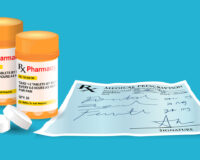Understanding Medicare Part D Costs in 2025
Medicare Part D, the part of Medicare that covers prescription drugs for millions of Americans, provides significant savings but comes with costs that beneficiaries need to plan for. Each year, adjustments are made to premiums, deductibles, and other costs associated with Part D. There will be some significant changes to the Medicare Part D costs 2025. We will discuss the Part D costs, what changes to expect, and tips to manage these expenses.
Watch a YouTube video on the Part D drug cap
Key Cost Components of Medicare Part D
Medicare Part D plans are offered by private insurance companies. Each plan has varying costs depending on the specific plan chosen. In 2025, the cost structure will include four main components:
Monthly Premiums
Medicare Part D premiums vary significantly, depending on plan and location. The average monthly premium for 2025 is around $40. Keep in mind, premiums for individual plans may be as high as $150 or as low as $0. Additionally, some beneficiaries qualify for the Medicare Extra Help program, which can help reduce premiums and other Part D costs.
Annual Deductible
In 2025, Medicare Part D’s standard annual deductible is capped at $590, though not all plans charge the maximum deductible. In general, plans use tiered pricing, meaning they might charge no deductible for lower-tiered drugs.
Initial Coverage Phase
Once the enrollee meets the deductible, they enter the initial coverage phase. During this phase, enrollees are responsible for a copayment or coinsurance for each prescription. In 2025, the initial coverage limit will be set at $2,000. This means that once the amount spent by the plan and the beneficiary reaches this threshold, enrollees transition to the catastrophic phase.
Catastrophic Coverage
In past years, after reaching the coverage gap or donut hole, beneficiaries would enter the catastrophic phase, with Medicare covering the bulk of prescription costs. A major shift in 2025 is the elimination of coverage gap/donut hole phase, meaning enrollees won’t have to pay coinsurance or copayments after reaching the catastrophic coverage limit of $2,000 in true out-of-pocket costs. This limit provides significant relief, especially for those needing high-cost medications.
Changes and Reforms Affecting Part D Costs in 2025
The Inflation Reduction Act (IRA) of 2022 brought changes to Medicare Part D in an effort to improve cost predictability and help enrollees manage high prescription drug expenses. Here’s a breakdown of the key IRA-related reforms that apply in 2025:
$2,000 Annual Out-of-Pocket Cap
Starting in 2025, Medicare Part D beneficiaries will have an out-of-pocket cap of $2,000 per year on prescription drugs. This landmark change helps beneficiaries with high drug costs avoid excessive spending and will particularly benefit those with high-cost prescriptions as long as they are on their plan’s formulary.
Monthly Payment Options
Medicare will introduce a “smoothing” option for beneficiaries with high prescription costs. This allows enrollees to spread out payments over the course of the year, rather than facing steep costs in any one month.
Managing Medicare Part D Costs in 2025
Compare Plans Carefully
Each Part D plan varies in terms of premiums, deductibles, and formulary (the list of covered drugs). Enrollees should review all available options carefully each year during the Medicare AEP (October 15 – December 7). A licensed Medicare agent can help to ensure beneficiaries choose a plan that best meets their needs and budget.
Use preferred pharmacies
Most Medicare Part D plans have preferred pharmacy networks where beneficiaries can get lower costs. Using these pharmacies can reduce copayments and coinsurance expenses. If enrollees use an out of network pharmacy, prescription drugs will usually cost more.
Ask your provider about lower-cost options
In some cases, when a beneficiary has a high-cost medication that is not on their plan’s formulary, they may want to ask their healthcare provider if there are generic or alternative medication that may be more affordable. Sometimes, a small change in medication can lead to considerable savings. If there is no generic available, their provider may need to ask for a formulary exception. When this is the case, the PDP plan provider agrees to pay for a non-formulary medication.
Evaluate Extra Help Options or patient assistance programs
Those who have a limited income and resources, may qualify for Medicare’s Extra Help program, which can help cover premiums, deductibles, and copayments. This program offers significant savings and could reduce costs drastically.
Additionally, many pharmaceutical companies offer assistance programs that provide discounts on high-cost drugs. Checking for available assistance can be a good strategy, especially for high-cost or specialty medications.
Preparing for 2025 and Beyond
The changes coming to Medicare Part D in 2025 are a step towards making prescription drugs more affordable for Medicare beneficiaries. The introduction of an annual out-of-pocket cap and the smoothing program can help provide Medicare enrollees better predictability of their prescription drug costs.
Anyone who relies on Medicare Part D, should review plan details and explore resources to manage these costs effectively. By understanding the structure of Part D and the recent changes, beneficiaries can maximize savings and access their medications without breaking the bank.














Leave a Comment